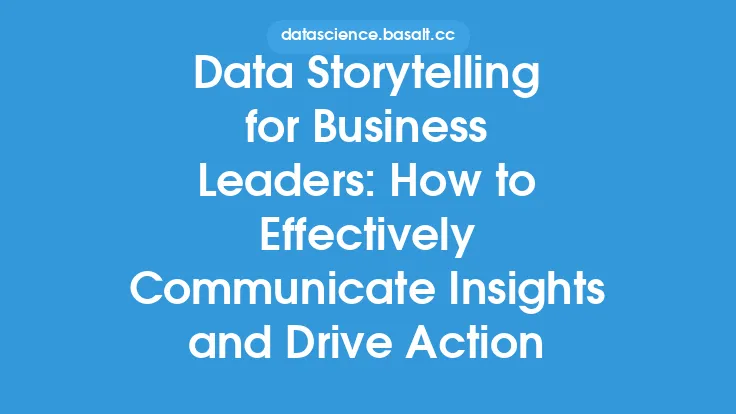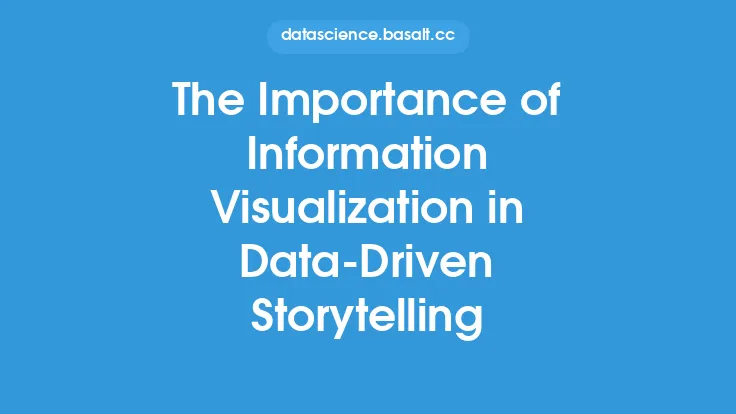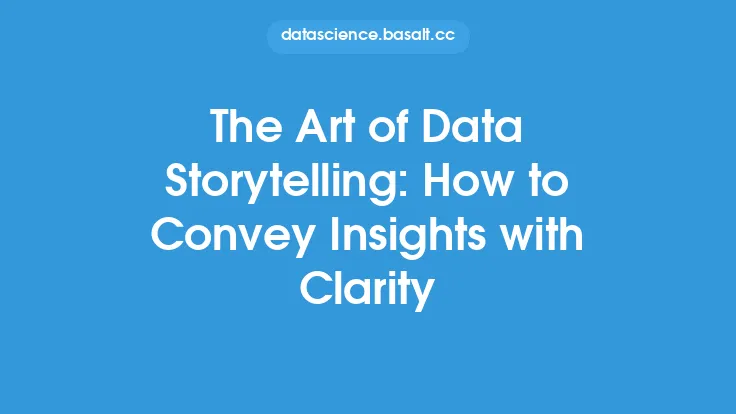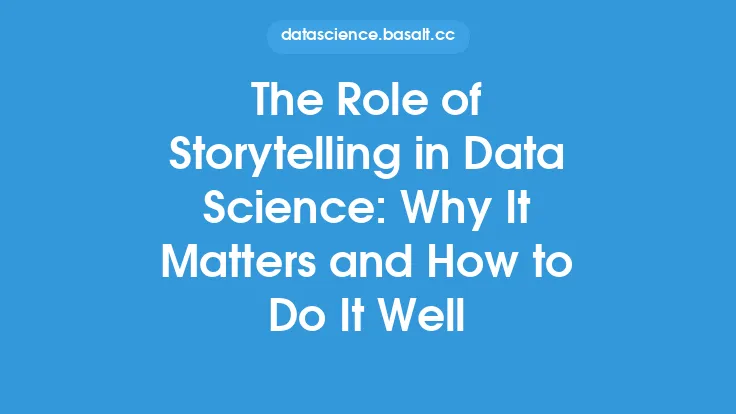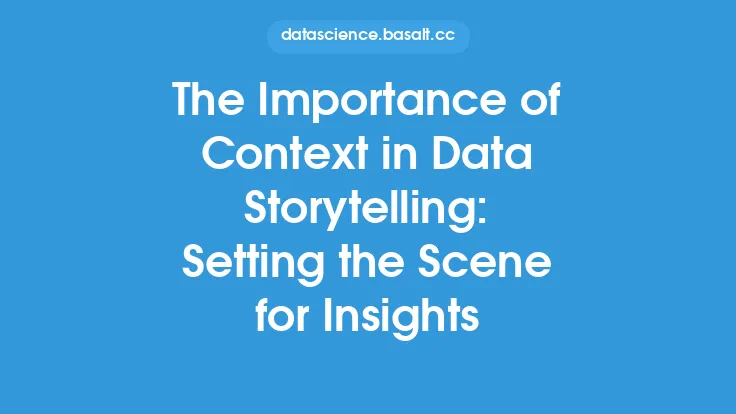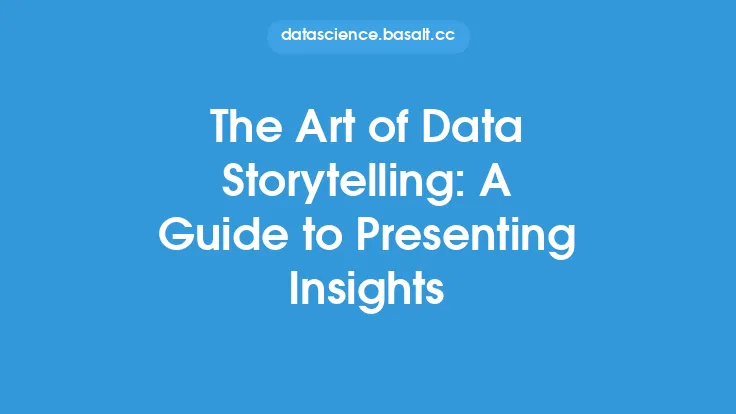Data visualization is a powerful tool for communicating insights and trends in data, but it can be ineffective if not presented in a way that resonates with the audience. This is where storytelling comes in – a crucial aspect of data visualization that helps to convey complex information in a clear and compelling manner. Storytelling in data visualization is not just about presenting facts and figures, but about creating a narrative that engages the audience and helps them to understand the insights and implications of the data.
Introduction to Storytelling in Data Visualization
Storytelling in data visualization involves using a combination of visual and narrative elements to convey a message or tell a story. This can include using charts, graphs, and other visualizations to illustrate key points, as well as incorporating text, images, and other multimedia elements to provide context and add depth to the story. The goal of storytelling in data visualization is to create a clear and concise narrative that communicates the insights and trends in the data, and helps the audience to understand the implications and relevance of the information.
The Benefits of Storytelling in Data Visualization
There are several benefits to using storytelling in data visualization. Firstly, it helps to engage the audience and make the data more accessible and interesting. By presenting the data in a narrative format, the audience is more likely to be invested in the story and to remember the key points and insights. Secondly, storytelling helps to provide context and add depth to the data, making it easier for the audience to understand the insights and implications. Finally, storytelling allows the presenter to communicate complex information in a clear and concise manner, making it easier for the audience to understand and act on the insights.
Crafting a Compelling Narrative
Crafting a compelling narrative is a critical aspect of storytelling in data visualization. This involves identifying the key insights and trends in the data, and using visual and narrative elements to convey these points in a clear and concise manner. The narrative should be structured in a logical and coherent way, with a clear beginning, middle, and end. The presenter should also use storytelling techniques such as setting the scene, introducing characters, and building tension to engage the audience and make the story more compelling.
Using Visualizations to Support the Narrative
Visualizations are a critical component of storytelling in data visualization. They help to illustrate key points and trends in the data, and provide a clear and concise way to communicate complex information. There are many different types of visualizations that can be used to support the narrative, including charts, graphs, maps, and infographics. The choice of visualization will depend on the type of data being presented, as well as the audience and the message being communicated. For example, a line chart may be used to show trends over time, while a bar chart may be used to compare categorical data.
Best Practices for Storytelling in Data Visualization
There are several best practices to keep in mind when using storytelling in data visualization. Firstly, it's essential to know the audience and tailor the narrative and visualizations accordingly. This includes using language and terminology that is familiar to the audience, as well as selecting visualizations that are relevant and engaging. Secondly, the narrative should be clear and concise, with a logical and coherent structure. The presenter should also use storytelling techniques such as setting the scene and introducing characters to engage the audience and make the story more compelling. Finally, the visualizations should be used to support the narrative, rather than overwhelm it. This includes using a limited color palette, avoiding clutter and unnecessary elements, and selecting visualizations that are easy to read and understand.
Technical Considerations
From a technical perspective, there are several considerations to keep in mind when using storytelling in data visualization. Firstly, the data should be clean and well-organized, with a clear and consistent structure. This includes using standardized formatting and naming conventions, as well as ensuring that the data is free from errors and inconsistencies. Secondly, the visualizations should be interactive and dynamic, allowing the audience to explore the data in more detail. This can include using tools such as filtering, sorting, and drill-down capabilities to provide more detailed information. Finally, the narrative and visualizations should be optimized for different devices and platforms, including desktop computers, laptops, tablets, and smartphones.
Common Challenges and Pitfalls
There are several common challenges and pitfalls to watch out for when using storytelling in data visualization. Firstly, it's essential to avoid overwhelming the audience with too much information or too many visualizations. This can include using a limited number of visualizations, as well as selecting visualizations that are easy to read and understand. Secondly, the narrative should be clear and concise, with a logical and coherent structure. This includes avoiding unnecessary elements and using storytelling techniques such as setting the scene and introducing characters to engage the audience. Finally, the presenter should be aware of the audience's level of technical expertise and tailor the narrative and visualizations accordingly. This includes using language and terminology that is familiar to the audience, as well as selecting visualizations that are relevant and engaging.
Conclusion
Storytelling is a critical aspect of data visualization, helping to convey complex information in a clear and compelling manner. By using a combination of visual and narrative elements, presenters can create a narrative that engages the audience and helps them to understand the insights and implications of the data. Whether you're presenting data to a technical or non-technical audience, storytelling is an essential tool for communicating insights and trends in a way that resonates with the audience. By following best practices such as knowing the audience, using clear and concise language, and selecting relevant and engaging visualizations, presenters can create a compelling narrative that communicates the insights and trends in the data, and helps the audience to understand the implications and relevance of the information.
